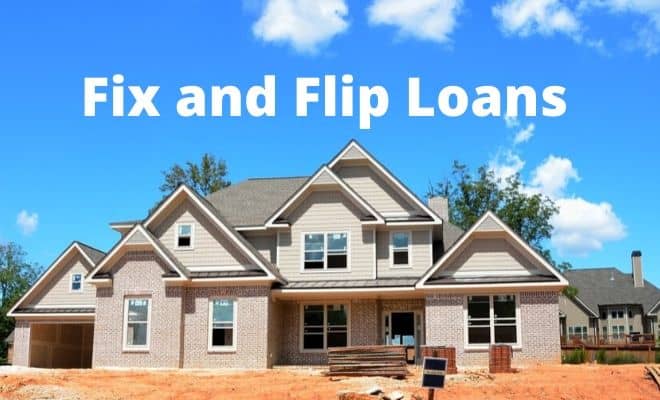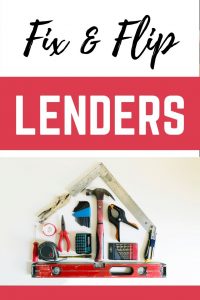Fix and Flip Loans

House flipping reached a 9 year high just one year ago. Six months later, home flipping statistics revealed a significant decline in both the number of homes flipped as well as the average profit earned per flipped home.
Money can be made in home flipping regardless of the market conditions. You will need a solid plan, an understanding of the costs, the local market, and the right fix and flip loan to move your project forward.
What is a Fix and Flip Loan?
Fix and flip loans are short term mortgages used by real estate investors to purchase a property, make improvements and repairs, then sell it for a profit. Fix and flip mortgages often will require less paperwork and sometimes no income verification, but usually have higher interest rates and fees.
Types of Fix and Flip Loans
These are the most common types of fix and flip loans available to real estate investors today. One of these fix and flip mortgage options may be better for you than the next one.
Hard Money Loans – Hard money loans are often used for fix and flip or short-term mortgage situations. Hard money lenders will likely charge points up front and the interest rates may be extremely high. Although the rates are higher, the true costs of the higher interest are not significant because these loans are typically held onto for less than two years.
Hard money lenders may also allow you to borrow some of the money needed to make improvements to the property. This is where the costs associated with the project and the ARV (after repair value explained below) come into play.
Non-QM Loans – Non-QM loans or Non-Qualified mortgages are mortgages that do not meet Fannie Mae or Freddie Mac guidelines. In most instances, it is because they are reduced documentation loans that do not require the borrower to qualify using tax returns.
The benefit of a non-QM loan versus a hard money loan is you may be able to borrow more of the initial purchase price with a higher loan to value ratio. The interest rates will also likely be lower than a hard money loan, but if you are buying an investment property, there may be a pre-payment penalty which is something to discuss with the non QM lender.
Many non-QM lenders have unique programs designed to help with fix and flip projects. These programs change often so contact us to see what your options are and to get a rate quote.
FHA 203k Loans – FHA 203k loans are a perfect way to purchase a home that you would like to rehab because you can borrow the money needed to purchase the home plus the additional funds for the remodel. You will just need to bring the minimum down payment of 3.5% to the closing table.
Although this is an attractive loan, it may be a little more challenging when it comes to a fix and flip scenario because you will need to occupy the property for a short time as your primary residence. For young real estate investors, you can purchase a single family or multi family home with an FHA 203k loan, remodel it, and then within two years sell or keep the property and move onto the next one. A great way to build wealth.
Click to get a rate quote for a fix and flip loan
How to Qualify for a Fix and Flip Loan 
When qualifying for a fix and flip loan, lenders may firs want to see the type of property flipping history or experience you have. Although the numbers still need to work, having prior experience and credibility will improve your chances of getting approved quickly.
Have a Fix & Flip Plan
First, you must have a solid plan in place before speaking to any lender. This will need to be a very details analysis of the cost to purchase the property, realistic costs for every improvement you plan to make, then a conservative sell price based upon the future value of the home.
Next, be prepared with the following:
- Estimated purchase price of the property
- List of improvements you want to make and their value
- Comparable values of recently sold properties in the area showing the estimated final value.
- Bank statements with enough funds to cover your down payment, closing costs, and reserves
Your lender will then walk you through the rest of the process and will let you know what else is needed. Each lender’s requirements may be a bit different from each other.
Best Fix and Flip Lenders
This is a short list of fix and flip lenders who may have a program that will fit your needs. We suggest contacting us by completing the short fix and flip scenario form and we will help match you with the best fix and flip lender.
If you are thinking about flipping a home, contact us so we can help you to decide which mortgage options work best for you.
Pros and Cons of Fix and Flip Loans
While fix and flip loans have their benefits, they also come with a downside too. There will always be a trade-off between accessing the funds with limited documentation and the costs associated with that benefit. Below are some pros and cons of fix and flip loans.
Pros
- Fast closings
- Borrow the money needed to make repairs
- No income verification needed
Cons
- High interest rates
- Higher fees than a traditional loan
- There may be a pre-payment penalty
- A larger down payment will likely be required
- Prior experience in flipping homes may be needed
These are just a few of the pros and cons. When you are speaking with one of our fix and flip lenders, make sure you ask questions related to the points referenced above.
What is the ARV (After Repair Value)?
The ARV also called the “After Repair Value” is the estimated value of the property after the proposed improvements are made. Lenders will use the ARV to determine the maximum loan amount for your project. This is why the initial plan we discussed earlier is so critical.
Should You Buy a Fix and Flip Home Under an LLC?
If you are purchasing a home solely as a fix and flip investment, you could consider purchasing the property under an LLC. Managing the project under an LLC will protect you from personal liability should anything go wrong. If you plan to take on more than one project and flip homes as an ongoing strategy, then you could operate all of your business transactions under the LLC.
Read more about this in our article purchasing a home under an LLC to see whether this is something you want to consider. Then, seek advice from a licensed attorney.
100% Financing No Money Down Fix and Flip Loans
It may be possible to find a no money down fix and flip loan, but the number of lenders who offer this type of program is limited. You can also expect the rates and fees to be high. However, if this is what you need to get the project done, then factor the higher rates and fees into your financial model and see if your plan still works.
Related Articles
First Time Landlords – Read about how to buy your first investment property and hold onto it as a rental.
FHA 203k Loans – This article provides a full description of what an FHA 203k loan is all about, how to qualify and what the requirements are.
Fair Housing and Discrimination – If you plan to rent out one of your properties, you should fully understand the laws about fair housing and discrimination. This article will walk you through everything you need to know.
The Last Resort Loan – This explains why sometimes hard money loans are the mortgage that people will look to as a last resort whether it is to fix and flip a home or to get out of a foreclosure situation.
